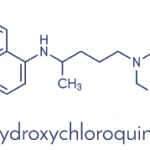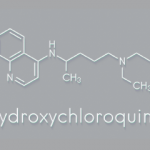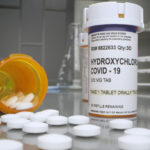Dr. Kingsbury said the trial’s aims were threefold, to: 1) assess HCQ as an analgesic treatment; 2) assess whether synovitis is associated with treatment response; and 3) determine effects on structural progression.
Patients were randomized 1:1 to HCQ or placebo. HCQ was dosed at 200–400 mg according to ideal body weight. The mean initial dose at baseline was 320 mg (n=114). Outcomes were assessed at three, six and 12 months. There was no significant difference in the numerical rating scale (NRS) between HCQ and placebo at the primary endpoint of six months, nor was a difference noted at three or 12 months. Ultrasound was used to identify patients with synovitis at baseline (94% had ≥1 joint positive for greyscale synovitis and 59% were Power Doppler positive). Synovitis at baseline was not found to be a significant predictor of response. Structural progression from baseline to 12 months was assessed by change in the Kallman score on radiograph. No significant difference in radiographic progression was seen between the treatment groups.
HCQ was deemed not to be cost effective with a smaller quality-adjusted, life-year gain than placebo. The results of this trial argue against the use of HCQ for the treatment of symptomatic hand OA, yet highlight the need for therapeutics in this prevalent disease.
 Lindsey MacFarlane, MD, MPH, is a member of the Division of Rheumatology at Brigham and Women’s Hospital in Boston.
Lindsey MacFarlane, MD, MPH, is a member of the Division of Rheumatology at Brigham and Women’s Hospital in Boston.
References
- Davies MR, Ribeiro LR, Downey-Jones M, et al. Ligands for retinoic acid receptors are elevated in osteoarthritis and may contribute to pathologic processes in the osteoarthritic joint. Arthritis Rheum. 2009 Jun;60(6):1722–1732.
- Nagai H, Matsuura S, Bouda K, et al. Effect of Am-80, a synthetic derivative of retinoid, on experimental arthritis in mice. Pharmacology. 1999 Feb;58(2):101–112.
- Styrkarsdottir U, Thorleifsson G, Helgadottir HT, et al. Severe osteoarthritis of the hand associates with common variants within the ALDH1A2 gene and with rare variants at 1p31. Nat Genet. 2014 May;46(5):498–502.
- Kingsbury SR, Tharmanathan P, Adamson J, et al. Hydroxychloroquine effectiveness in reducing symptoms of hand osteoarthritis (HERO): Study protocol for a randomized controlled trial. Trials. 2013 Mar 2;14:64.


